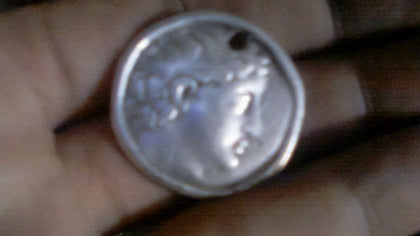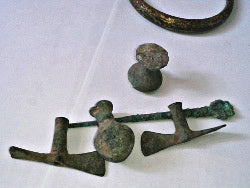Rare Discovery: Tetradrachm from the Seleucid Era

Region: North Africa
Estimated value: EUR 800,00
Time of origin: between 270 and 220 BC
The Diadochi Dynasty of Seleucus
This rare ancient coin originates from the powerful Seleucid Empire and dates to the period between 270 and 220 BC. The Seleucid kingdom emerged after the death of Alexander the Great, when his generals divided the vast Macedonian Empire among themselves. One of these generals was Seleucus the First, a trusted commander who inherited the province of Babylonia and used it as a foothold to build one of the largest Hellenistic empires in history.
Through strategic conquests and political alliances, Seleucus expanded his dominion until it stretched across enormous territories. At its peak, the Seleucid Empire controlled large parts of Asia Minor, Syria, Mesopotamia, Persis, Parthia and Bactria, creating a multicultural realm where Greek, Persian and local traditions lived side by side.
The coin shown here is a tetradrachm, likely minted during the reign of Antiochos Hierax, a ruler whose ambition and turbulent life left a clear mark on the empire’s history.
The Coin Culture of the Seleucid Empire
Seleucid coinage is one of the most fascinating sources for understanding the rulers of the Hellenistic period. Their coins often carry lifelike portraits of kings such as Antiochos One or Seleucus One, presenting them with idealized features inspired by Greek artistic traditions.
The reverse side of Seleucid coins typically depicts symbols of power: Greek deities, majestic animals such as horses or eagles, or mythological scenes. For historians, these images serve as valuable evidence, since many Seleucid rulers are known today primarily from the portraits engraved on their surviving silver and bronze coins.
Coins in the Seleucid Empire were far more than simple currency. They were one of the most effective tools for royal propaganda. By circulating coins across vast territories, the rulers spread political messages, reinforced their legitimacy and shaped how people viewed them.

The coin most likely portrays Antiochos Hierax, the younger brother of Seleucus the Second. Although he was originally appointed co-ruler, he soon turned against his brother and initiated a conflict that split the empire. Antiochos seized control over large parts of Asia Minor and established his own power base. His chosen name Hierax, meaning hawk, symbolized his bold ambition and his desire to rise above all rivals.
The Economy of the Seleucid Empire
The Seleucid Empire prospered due to its strategic position along the legendary Silk Road. From 115 BC until the thirteenth century AD, this route connected China, Central Asia, the Middle East and the Mediterranean, forming one of the most important trade networks in world history.
The Silk Road stretched across deserts, mountains and rivers, running along the Great Wall of China, over the Pamir Mountains and into Afghanistan. From there, goods were transported westward toward the Mediterranean. This allowed the Seleucid Empire to act as a crucial link between Asia and Europe.
The western cities of the empire flourished through the trade of ceramics, metal jewelry and other crafted goods, many of which were exported to Greece and Italy. Babylonia, another key region, specialized in producing fine textiles. Thanks to their access to the Dead Sea, the Seleucids also obtained valuable asphalt used for construction and industrial purposes.
As the empire grew wealthier, a stable medium of exchange became essential. Coins played a central role in maintaining economic activity, facilitating long distance trade and ensuring that merchants across the vast empire used a unified currency system. Since their invention in ancient China almost two thousand years ago, coins have been a cornerstone of global economic systems, and the Seleucids embraced them fully.
Frequently Asked Questions
What type of coin is this discovery?
It is a silver tetradrachm from the Seleucid Empire, most likely minted during the reign of Antiochos Hierax.
Who was Antiochos Hierax?
Antiochos Hierax was the younger brother of Seleucus the Second. He declared independence, seized parts of Asia Minor and adopted the name Hierax, meaning hawk, to reflect his ambition.
Why are Seleucid coins historically important?
Seleucid coins often contain detailed portraits of rulers and mythological symbols. Since written sources are limited, these coins help historians identify kings, track political changes and understand royal propaganda.
How did the Seleucid Empire benefit from the Silk Road?
Its position along the Silk Road allowed the empire to become a commercial hub connecting Asia and Europe. The trade of textiles, ceramics, metalwork and other goods created significant economic growth.
What materials did Seleucid cities trade most commonly?
Key goods included metal jewelry, ceramics, textiles and asphalt from the Dead Sea. These products were transported across the empire and exported to regions such as Greece and Italy.
Get Rewarded for Your Treasure Finds
You have also made discoveries and detected amazing artifacts and would like to share them (anonymously)? We look forward to reading and publishing your success stories!


